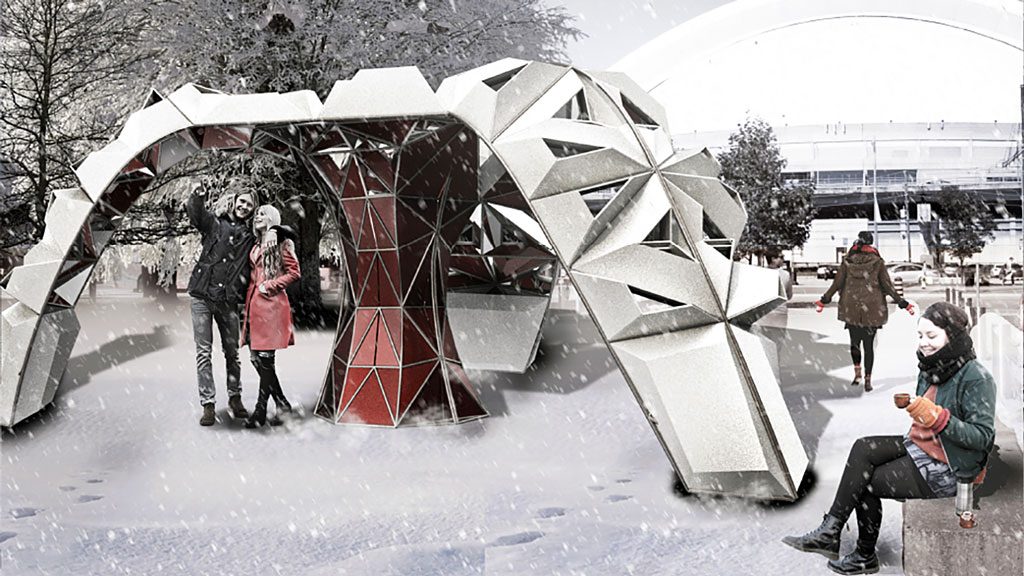TORONTO — The winners have been announced for the third annual Ice Breakers competition, presented by PortsToronto, with each of the winning public art installations to be on display on Toronto’s waterfront.
A collaboration between Winter Stations, the Waterfront Business Improvement Area and PortsToronto, this year’s exhibition will feature four winning installations which emerged from an international design competition. Teams from Hamburg, Germany and Athens, Greece will be joined by two local groups, as well as a student installation contributed by Ryerson University. Each of the designs respond to this year’s exhibition theme, signal transmission. The four winning installations were selected by a jury.
The event aims to get Torontonians and visitors to venture to the water’s edge during the winter months. All five Ice Breakers installations will be on display along the waterfront beginning Jan. 19. The exhibition will run over five weeks, overlapping with the debut of the fifth anniversary of the Winter Stations competition in The Beaches on Family Day.

The 2019 Ice Breakers installations include:
- Chroma Key Protest by Andrew Edmundson of Solve Architects Inc. (Toronto): Twenty-five wood buoys are anchored in a basin, each with an arm extending upward and holding a placard of bright chroma key green. Individually, the buoys could be mistaken for a new kind of marine marker, but as a group they resemble an organized group of protesters occupying a public space.
- Tweeta-Gate Eleni Papadimitriou and Stefanos Ziras of Space Oddity Studios SOS (Athens): As you make your way through the installation, a plethora of gates emerge reminiscent of various traditional architectural styles from around world. Made from yellow painted wood and metal connections, the gates can be seen from afar and beckon you to interact with them. Bells are mounted on the different gates of the installation and can be activated by the people passing through or by wind or snow falling on them.
- Connector by Alexandra Griess and Jorel Heid (Hamburg): A playful, interactive communication device based on the beginnings of telecommunications where cables were still laid above ground. The Connector lacks an operator, so communication becomes a game; the conversation can be searched but who responds or receives the verbal signals is not immediately apparent.
- Stellar Spectra by Rob Shostak and Dionisios Vriniotis (Toronto): A place of light, the signal from the stars split into two sculptural columns of starlight rooms: warm and cool lighthouses by the water. As the sun shines from above, it refracts through the filters. Together the shafts create a spectrum of light. The cascade of colours spreads throughout the spaces and onto the stargazers.
- Tripix by Ryerson University (Toronto): With constantly developing technological advances, social media is beginning to change the way architecture is experienced. Rather than being an appreciation of spatial conditions, architecture is being seen as an ocular-centic art — to be viewed on screens and experienced through various media outlets. This design brings the idea of the ocular-centric experience of architecture to light through the reflective interior condition. The kaleidoscopic effect of the interior is reminiscent of an image driven society, the release reads.




Recent Comments
comments for this post are closed